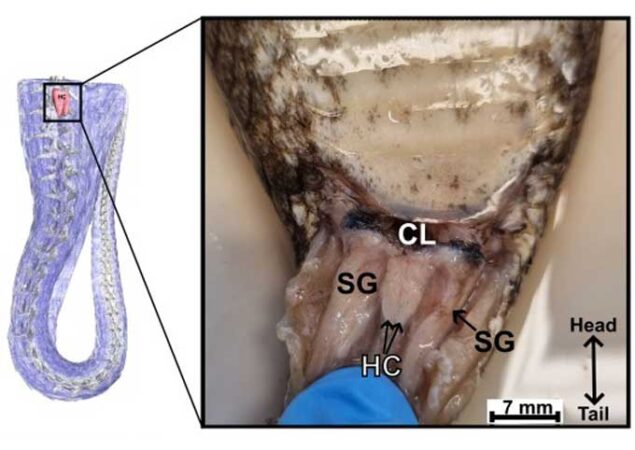Female snakes have clitorises too, a new study finds.
The research raises the possibility that the sex lives of snakes are more complicated and diverse than previously understood, researchers report December 14 in Proceedings of the Royal Society B.
Clitorises are found in a wide range of vertebrate life, from crocodiles to dolphins (SN: 1/10/22). One exception is birds, which lost their clitorises over the course of their evolution. Female snakes appeared to have lost the sex organ too, which was puzzling, since their close lizard relatives possess paired clitorises, called hemiclitorises. Male lizards and snakes have accompanying paired phalli, or hemipenises.
Science News headlines, in your inbox
Headlines and summaries of the latest Science News articles, delivered to your email inbox every Friday.
Thank you for signing up!
There was a problem signing you up.
This element of female snakes’ sexual anatomy went unexamined in detail for so long partly because hemiclitorises can be fragile and easy to miss, but also because female genitalia have historically been considered “quite taboo,” says evolutionary biologist Megan Folwell of the University of Adelaide in Australia.
“Even in humans, the proper function and significance of the human clitoris was still being discussed in 2006,” she says.
Conflicting accounts of snake hemiclitorises in some scientific papers led Folwell to take a detailed look. She first examined a euthanized female common death adder (Acanthophis antarcticus). “I just started with dissecting the tail and going into it with a really open mind of what I might find,” she says.
She was “pleasantly surprised” to find dual organs within that were completely different from the hemipenises found in male snakes. Also, unlike lizard hemiclitorises, the snake’s couldn’t turn out externally.
To confirm she wasn’t looking at a lump of some other tissue, Folwell and her colleagues carefully examined sections of the organs under a microscope. The team also soaked the tail in iodine, which allowed the soft tissues in the genital region to be seen with greater resolution using X-rays.
These analyses showed that the tissues were fundamentally different from the male snake’s hemipenises. The female organs were full of primarily collagen rather than muscle fibers running through the structure. Another analysis showed the organs had “heaps of nerves” throughout them, Folwell says, suggesting they probably have substantial tactile sensitivity. Like other species’ clitorises, the snake’s showed a robust blood supply.
From astronomy to zoology
Subscribe to Science News to satisfy your omnivorous appetite for universal knowledge.
The team expanded its study to eight more snake species across four families, revealing a dizzying array of clitoral diversity. For instance, Folwell says, the hemiclitorises of the Mexican cantil viper (Agkistrodon bilineatus) are huge, filling the space of the tail. “Then you see the Ingram’s brown snake, which was so teeny tiny. If you didn’t know what you’re looking for, it definitely could have been missed,” Folwell says.
Some hemiclitorises are thin and lay atop the scent glands, while others are sandwiched between or even a combination of on top and between, she adds.
Snakes are thought to have evolved from lizard ancestors. The findings show that, evolutionarily speaking, the snake clitoris “wasn’t lost; it was just changed,” says Diane Kelly, an evolutionary biologist at the University of Massachusetts Amherst, who wasn’t involved with this study.
Folwell and her colleagues think the hemiclitorises may be stimulated during courtship and mating behaviors, such as the twisting together of tails. This may make the female more receptive, encouraging longer and more frequent mating and enhancing the chances of fertilization.
“It’s been often believed that, in snakes, it’s been all about coercion, and all about the male driving mating,” Folwell says. “It may be a little bit closer toward seduction in some species.”
Going forward, Folwell wants to look further into how nerves in hemiclitorises are involved in any touch sensitivity and function during mating.
Kelly notes that comparing hemipenises and hemiclitorises of the same species could help get an idea of the organs’ function in snakes, and potentially reveal any back-and-forth evolution between males and females.
“It’s 2022, and here’s a brand-new anatomical finding in a really common animal,” Kelly says. “There’s a lot of anatomy that we still don’t know yet.”


